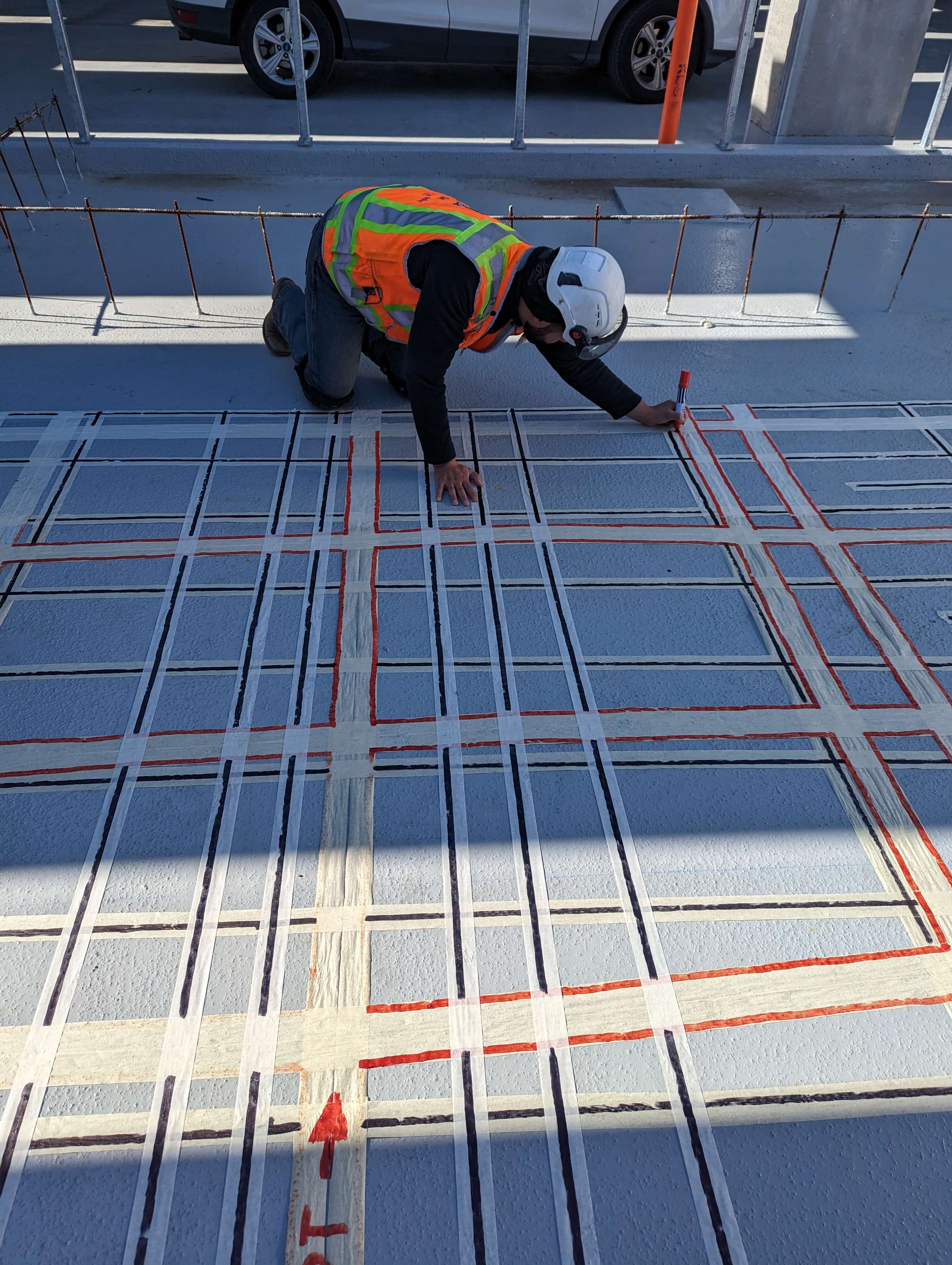Past the Surface: Leveraging Advanced Concrete Scanning Techniques for Unmatched Accuracy and Understanding
In the realm of construction and framework maintenance, the pursuit for accuracy and thoroughness is incessant. Advanced concrete scanning techniques have actually become essential tools in this search, providing a look beneath the surface area to introduce a world of critical insights. By taking advantage of advanced modern technologies, professionals can discover abnormalities, evaluate the problem of concrete structures, and make educated choices that shape the course of tasks. The effects of these strategies extend much past mere surface-level examinations, assuring a depth of precision and understanding that is unequaled.
Importance of Advanced Concrete Scanning
The importance of making use of advanced concrete scanning techniques depends on the exceptional accuracy they use for identifying sub-surface anomalies and making sure structural stability. By utilizing innovative innovations such as ground-penetrating radar (GPR), electro-magnetic induction, and progressed finder imaging, building and construction specialists can dive under the surface area of concrete frameworks with a degree of precision that far goes beyond typical examination approaches. Concrete Scanning. These methods make it possible for the recognition of surprise dangers like rebar rust, spaces, conduits, or post-tension cables that could compromise the security and safety and security of a framework gradually
Additionally, advanced concrete scanning provides invaluable understandings right into the general condition of a concrete component without the requirement for invasive measures, minimizing the threat of triggering damage throughout the evaluation process. The capacity to identify the exact location and deepness of prospective issues permits targeted fixings and upkeep, ultimately lengthening the life expectancy of the structure and maximizing its performance. Basically, the relevance of sophisticated concrete scanning can not be overstated in the realm of building and facilities maintenance, where precision and reliability are critical.
Kinds Of Cutting-Edge Technologies

Anomalies and Issue Detection

Along with GPR, concrete scanning strategies like thermography and impact-echo screening are likewise efficient in spotting anomalies and problems. Thermography utilizes infrared technology to identify variants in surface area temperature level, showing possible locations of worry such as delamination or wetness ingress. On the other hand, impact-echo testing includes evaluating acoustic reactions to discover voids, cracks, and various other issues within the concrete. By leveraging these innovative techniques, specialists can proactively resolve architectural problems, guaranteeing the longevity and safety and security of concrete frameworks.
Assessing Concrete Condition
Just how can designers precisely review the problem of concrete structures to guarantee their longevity and security? Evaluating the concrete problem is a crucial element of maintaining framework integrity. Numerous innovative concrete scanning methods are employed for this function. Ground-penetrating radar (GPR) is commonly utilized to assess the interior framework of concrete, discovering spaces, cracks, and various other abnormalities that may endanger its stamina. In addition, impact-echo testing can provide insights right into the thickness and stability of concrete components. Ultrasonic pulse velocity testing is another valuable technique for reviewing concrete quality by determining the rate of sound site link waves with the material.
Moreover, visual assessment continues to be a basic component of concrete condition assessment. Engineers aesthetically take a look at the surface area for indicators of deterioration, such as spalling, breaking, or discoloration. Combining non-destructive testing methods with visual examinations enables for a comprehensive assessment of concrete condition, enabling engineers to identify potential problems beforehand and apply prompt upkeep or repair services. By leveraging these sophisticated methods, engineers can make sure the long-term resilience and safety of concrete structures.
Enhancing Decision-Making Procedures
In the realm of framework administration, optimizing decision-making procedures is critical for making sure the efficient maintenance and long life of concrete structures. Enhanced decision-making procedures in concrete management include utilizing innovative scanning techniques to collect in-depth data on the problem of structures. By leveraging modern technologies such as ground-penetrating radar and 3D imaging, stakeholders can make educated choices relating to support, repair, or have a peek at this site substitute strategies.
These progressed scanning strategies supply invaluable understandings right into the inner composition of concrete, determining possible issues such as spaces, splits, or corrosion that may not show up externally. This level of in-depth details permits positive upkeep planning, minimizing the risk of architectural failings and increasing the total lifespan of concrete structures.
Additionally, by integrating electronic documents and evaluation devices into the decision-making process, stakeholders can track the evolution of concrete conditions over time, enabling predictive upkeep approaches and maximizing source allocation. Inevitably, the combination of advanced concrete scanning techniques improves decision-making processes by offering unrivaled accuracy, understanding, and performance in framework administration.
Final Thought
In conclusion, progressed concrete scanning strategies use unrivaled precision and understanding in identifying anomalies, defects, and evaluating the condition of concrete frameworks. By leveraging innovative technologies, decision-making processes can be boosted, causing more enlightened and effective options for keeping and fixing concrete infrastructure. These strategies play a critical function in ensuring the safety and security and longevity of concrete frameworks, making them a crucial device in the field of building and construction and engineering.
Moreover, advanced concrete scanning provides vital insights right into the overall problem of a concrete element without the demand for invasive procedures, reducing the threat of causing damages throughout the evaluation procedure - Concrete Scanning. Another cutting-edge technology is 3D X-ray scanning, which supplies detailed pictures of the inner structure of concrete, using beneficial info without the demand for damaging screening. Additionally, Concrete Cover Meters are utilized to see page determine the density of concrete cover over reinforcement bars precisely. Boosted decision-making processes in concrete administration entail making use of advanced scanning methods to collect thorough data on the condition of frameworks.In verdict, advanced concrete scanning methods use unparalleled accuracy and insight in finding abnormalities, defects, and evaluating the problem of concrete frameworks